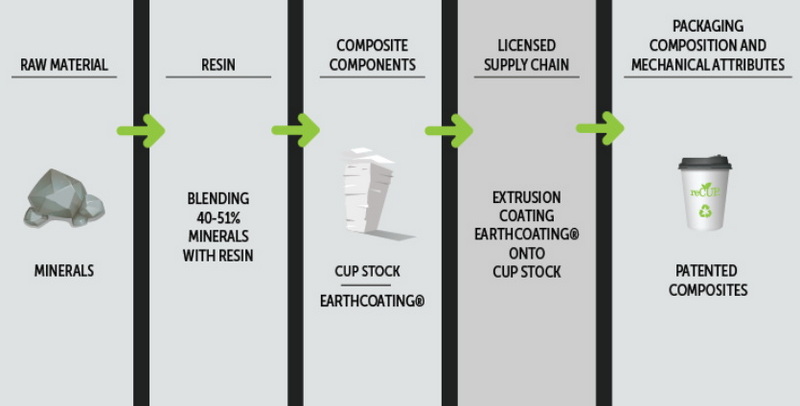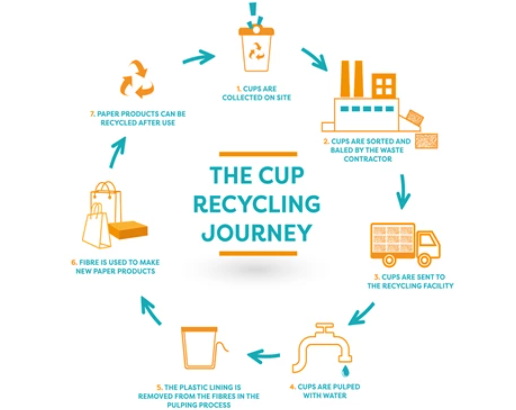
Content Menu
● Introduction to Disposable Cup Recycling
>> Challenges in Recycling PPL Cups
>> Innovative Recycling Methods
● The Recycling Process for Disposable Cups
● Practical Steps for Individuals
● Business and Community Initiatives
>> Case Study: Successful Recycling Programs
● The Role of Technology in Disposable Cup Recycling
>> Future Developments
● Conclusion
● Frequently Asked Questions
>> 1. What are the main challenges in recycling disposable cups?
>> 2. How can individuals contribute to disposable cup recycling?
>> 3. What innovative methods are being used to recycle PPL cups?
>> 4. What products can be made from recycled paper cups?
>> 5. Why is it important to recycle disposable cups?
Disposable cups, particularly those made from paper plastic laminates (PPL), have become a significant environmental concern due to their contribution to plastic pollution. The recycling of these cups is challenging but crucial for reducing waste and promoting sustainability. This article will delve into the process of recycling disposable cups, highlighting innovative methods and practical steps for individuals and businesses.

Introduction to Disposable Cup Recycling
Disposable cups are used extensively worldwide, with millions being discarded daily. The majority of these cups are made from paper coated with a thin layer of plastic, known as PPL. This composition makes them difficult to recycle using conventional methods, as the plastic and paper need to be separated before recycling.
Challenges in Recycling PPL Cups
1. Separation of Materials: The primary challenge in recycling PPL cups is separating the paper from the plastic. This requires specialized processes or equipment.
2. Lack of Infrastructure: Many recycling facilities do not have the capability to process PPL cups efficiently.
3. Perceived Environmental Friendliness: Despite being coated with plastic, PPL cups are often mistakenly believed to be fully recyclable or biodegradable.
Innovative Recycling Methods
Innovative approaches are being developed to tackle the recycling of PPL cups. For instance, researchers at De La Salle University have proposed a method to convert used PPL cups into laboratory pipette tips, which can be used in educational settings. This method not only reduces waste but also promotes sustainability in educational institutions.
Additionally, companies like TerraCycle offer specialized recycling programs for hard-to-recycle materials, including PPL cups. These programs involve collecting and processing the cups through a unique recycling process that separates the materials effectively.
The Recycling Process for Disposable Cups
The recycling process for disposable cups involves several steps:
1. Collection: Cups are collected in designated bins, ensuring they are clean and free of lids and liquids.
2. Sorting: Cups are sorted from other recyclables to ensure a clean stream of material.
3. Pulping: Cups are pulped with warm water and chemicals to break down the material and separate the plastic from the paper.
4. Reprocessing: The paper can be reprocessed into new products like paper bags or notebooks.
5. Plastic Repurposing: The plastic layer can be converted into small plastic pellets, which can be molded into various products such as park benches or playground equipment.

Practical Steps for Individuals
Individuals can contribute significantly to the recycling of disposable cups by following these steps:
1. Use Recycling Bins: Ensure that cups are placed in designated recycling bins.
2. Clean the Cups: Rinse cups to remove any residue before recycling.
3. Remove Lids and Straws: Separate lids and straws, as they are often made from different materials.
4. Participate in Community Programs: Engage with local recycling initiatives and events that focus on disposable cup recycling.
5. Educate Others: Share information about the importance of recycling disposable cups with friends and family.
Business and Community Initiatives
Businesses and communities can also play a crucial role in promoting disposable cup recycling:
1. Implement Recycling Programs: Establish cup recycling schemes in workplaces and public spaces.
2. Educate Consumers: Raise awareness about the importance of recycling disposable cups through signage and campaigns.
3. Partner with Recycling Facilities: Collaborate with local recycling facilities to ensure cups are processed correctly.
4. Offer Incentives: Provide discounts or rewards for customers who bring their used cups for recycling.
5. Adopt Sustainable Alternatives: Encourage the use of reusable cups by offering discounts for customers who use them.
Case Study: Successful Recycling Programs
Cities like London have implemented successful recycling programs for disposable cups. These programs involve partnerships between local businesses, recycling facilities, and community groups to ensure that cups are collected and processed efficiently.
The Role of Technology in Disposable Cup Recycling
Technology is increasingly playing a vital role in enhancing the efficiency of disposable cup recycling. For example, advanced sorting machines can quickly separate cups from other recyclables, improving the quality of the recycling stream. Additionally, digital platforms can help track the collection and processing of cups, providing valuable insights for improving recycling rates.
Future Developments
Future developments in disposable cup recycling are likely to focus on improving the separation of materials and increasing the use of recycled materials in new products. Innovations such as biodegradable coatings and compostable cups are also being explored as alternatives to traditional PPL cups.
Conclusion
Recycling disposable cups is a complex process that requires both innovative solutions and practical actions from individuals and businesses. By understanding the challenges and implementing effective recycling methods, we can significantly reduce plastic waste and promote a more sustainable environment. As we continue to develop new technologies and strategies for recycling PPL cups, it is essential that we also educate the public about the importance of proper disposal and recycling practices.

Frequently Asked Questions
1. What are the main challenges in recycling disposable cups?
The main challenges include separating the plastic from the paper and the lack of specialized recycling infrastructure for PPL cups.
2. How can individuals contribute to disposable cup recycling?
Individuals can contribute by using designated recycling bins, cleaning the cups before recycling, and removing lids and straws.
3. What innovative methods are being used to recycle PPL cups?
Innovative methods include converting PPL cups into laboratory pipette tips and using specialized pulping processes to separate materials.
4. What products can be made from recycled paper cups?
Recycled paper from cups can be turned into products like paper bags, greetings cards, and notebooks.
5. Why is it important to recycle disposable cups?
Recycling disposable cups helps reduce plastic pollution, decreases waste accumulation, and promotes sustainability in both consumer and educational settings.

















